Estefany: Midwifery Student & Community-Based Doula Honoring the Parteras Before Her
Doula Routines
Estefany Angeles’ days are filled with mentoring doulas, teaching childbirth education, attending births, and balancing family life - all while pursuing her midwifery training. In this intimate profile, she shares who she is and the story of a late night call to support a home birth transfer.
Rooted in tradition. Estefany’s paternal great-aunt was a partera—a traditional midwife—in el campo in the Dominican Republic. That side of her family hailed from Loma de Ángeles, a mountainous region at the island’s center. On her maternal side, her great-grandmother’s partera was her sister-in-law. “It was all in the family,” Estefany says. “The people attending the births were sisters, cousins, aunts. They took care of everyone’s babies.”
One family story stands out to Estefany: when one of her grandmother’s 10 children was born prematurely, the partera breastfed the baby herself. This deep sense of community care runs through Estefany’s lineage and serves as a source of inspiration for her work today.
“It was all in the family,” Estefany says. “The people attending the births were sisters, cousins, aunts. They took care of everyone’s babies.”
Reviving a fading legacy. The traditions of parteras and community-led birth are at risk of disappearing, a reality Estefany is determined to change. On a recent trip to the Dominican Republic, she interviewed a 93-year-old partera who shared stories and photos of the babies she had caught and the families she helped usher across birth’s threshold.
Inspired by this encounter, Estefany joined Partos Humanizado RD, a Dominican Republic-based group of doulas and midwives working to preserve and revive these time-honored practices. “Community-led birth work is on the brink of extinction,” she says, “but together, we’re bringing it back.”
“Community-led birth work is on the brink of extinction,” she says, “but together, we’re bringing it back.”
An early career as a high school teacher. Before becoming a doula and birth educator, Estefany spent six years as the Director of College and Career Advising at a New York City public charter school. Prior to that, she was a Teach for America Corps Member placed in Miami-Dade County, Florida to teach high school math. While in her administrative role, she noticed a gap in the curriculum - her students needed life skills beyond textbooks. Estefany organized workshops on CPR, driver safety, and sex education, bringing in a local doula to teach the latter.
A personal connection with a doula. Years later, when Estefany was pregnant with her first child, her sister helped her connect with a doula. Over coffee, Estefany asked the doula, “So what exactly do you do?” The description resonated deeply. “I was having my first baby and I wanted all the things,” Estefany says with a laugh.
The connection they built was transformative. Her doula attended the home births of both of Estefany’s children. “They were the best team - my husband and the doula worked seamlessly together. I couldn’t have imagined doing it without her,” she says.
At her second birth, Estefany felt the power of her doula’s presence more profoundly than ever. “It wasn’t until she arrived that I felt like I could have the baby. When I saw her, my body just relaxed. It was so special.” That moment may have planted a seed in Estefany’s heart - a calling to become a doula herself.
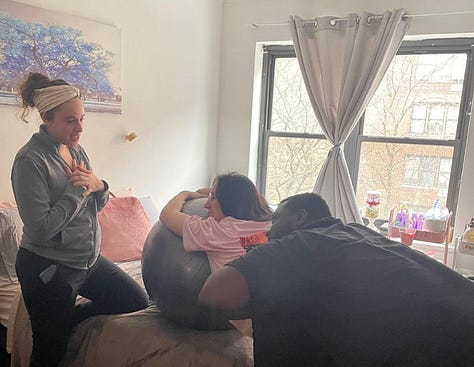
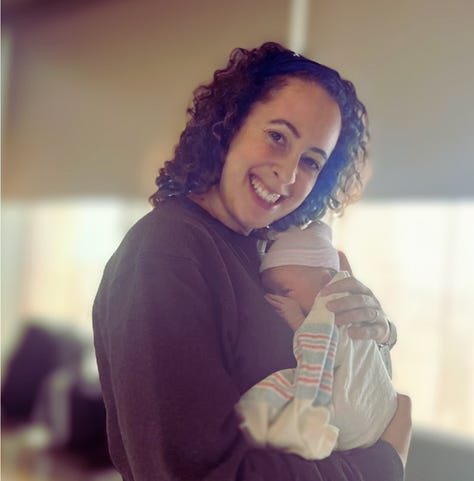
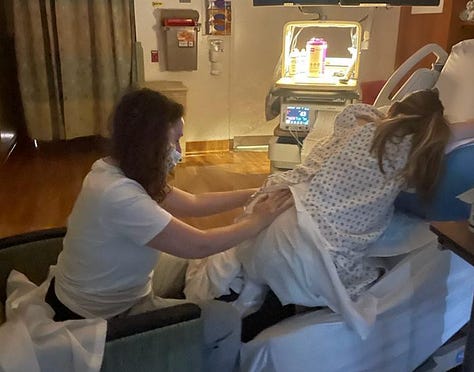
A lifelong learner turned birthworker. Estefany’s passion for learning propelled her into a career shift. After 12 years in education, she earned certifications as a childbirth educator, doula, and birth assistant. But it was that visit to the 93-year-old partera in the Dominican Republic that solidified her decision to pursue midwifery.
Early last year she applied to Commonsense Childbirth School of Midwifery, the only Black-owned midwifery school in the U.S., was awarded a full scholarship, and enrolled shortly after. “I chose this program because I needed to learn from people who are at the foundation of where this knowledge began. Commonsense Midwifery was the only place I could get that,” she says.
Balancing work, family and a vision. Today, Estefany’s schedule is a balance of teaching childbirth education, attending classes, training and mentoring doulas, all while parenting two young children and preparing for the arrival of her third. Her midwifery program requires her to attend 75 births within three years - a demanding yet deeply rewarding experience. She does this by working on-call as a birth assistant for a home birth midwife.
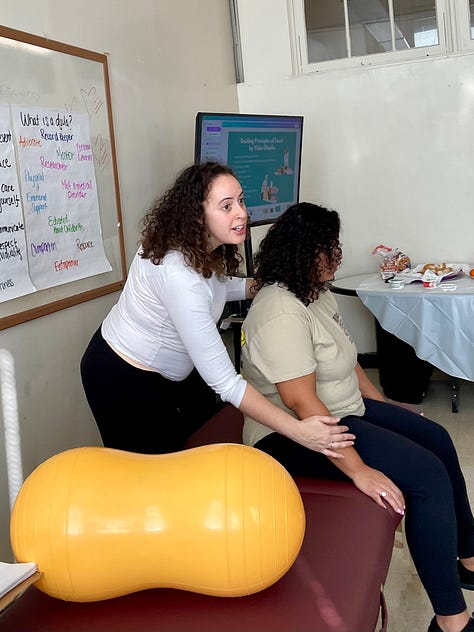
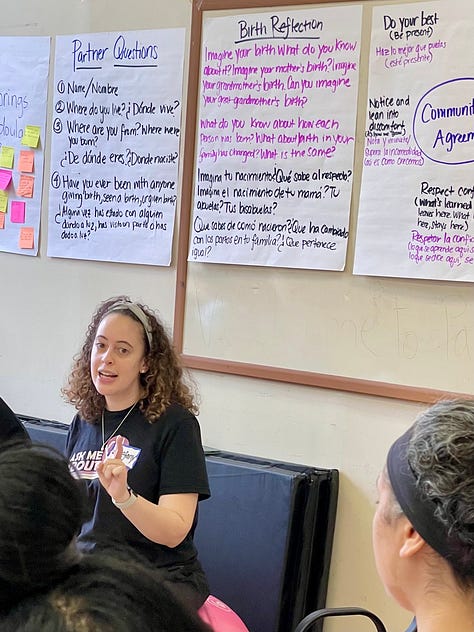
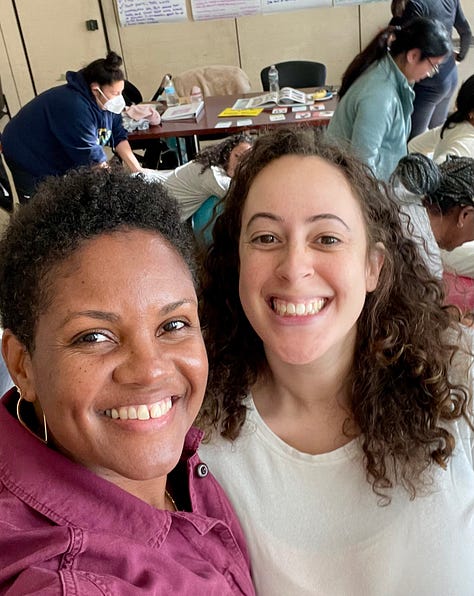
Through it all, her vision remains clear. “One of my long-term goals is to teach future parteras. I want to keep that midwifery knowledge alive. I’m hoping we can pass it along and keep the traditions strong.”
“One of my long-term goals is to teach future parteras. I want to keep that midwifery knowledge alive. I’m hoping we can pass it along and keep the traditions strong.”
Here’s how Estefany describes supporting the home birth transfer and 48-hour labor of a client she met for the first time at the hospital.
Stepping in for a doula sister. It was late in the night when my phone buzzed. A fellow doula called with an urgent request - one of her kids had an emergency, and she needed me to step in for her client. The client had been attempting a planned home birth but was now transferring to the hospital. Fortunately, I was available. I grabbed my bag and headed out to meet the clients, their midwife, and the doula I was relieving at the hospital.
Navigating tense moments. The first thing a nurse said to me when I arrived was, “You need to convince her to get an epidural.” The tension in the air was thick. I couldn’t help but wonder if my client felt safe here. After a quick discussion with her support team, my client decided to transfer to a hospital that had a trusted midwifery practice just a few miles away. It was the right call - the new environment was warm, supportive, and so much better.
Breaking the ice and building trust. Meeting a new client mid-labor can be delicate. I always start by introducing myself, observing the space, and getting the vibe before jumping in. I try to be vulnerable too. To build trust, I like to share a little about myself - my family, my interests - and look for moments of connection. I’m always looking for points of commonality. Any time that I can share moments of shared interest, I’m like - yeah, let’s build on that! Rapport isn’t just about what I bring; it’s a two-way street.
A little bit of rest for everyone. After a long day of laboring, my client opted for an epidural so that she could get some much-needed rest. I used this time to rest too. Out came my trusty sleeping mat that I inflated with an annoying foot pump. I always have a rebozo at births, which doubles as a blanket. My headband became an impromptu eye mask, and I slipped into extra socks to get cozy on the hospital floor.
A doula with a toolbelt. On day two, we had a surprise visit from the hospital’s on-staff doula who was fabulous! She was a powerhouse of ideas, wearing a toolbelt stocked with lotions, scented oils, and other tricks. Watching her work was inspiring, especially since she, like me, was meeting this family for the first time. It was a reminder of the strength and adaptability doulas bring to every labor.
Two days and a community built. Over the course of two full days, we built something truly special: community. Initially, I wondered if I was going to be able to fill these shoes, having just met this family. But by the end of it, I was amazed at the connection we’d formed. We shared meals, supported one another, and created a warm, unified energy in the room.
Wow, the guided meditations worked! Near the end of the second day, there was growing pressure on my client to give birth soon. To help ease her mind and encourage progress, we did guided meditations and visualizations together. I read to her, and as we focused, she suddenly felt the baby drop. I was like, wow it worked! That was an incredible moment - proof of the power of calm, connection and trying new things.
I was like, wow it worked!
Teamwork and sweet gestures. As labor picked up, the client’s partner and I supported her through every contraction, working together as a unit. He was attentive and kind, ensuring everyone was fed and comfortable. His mom even cooked for us and brought a meal to the hospital. Their warmth and thoughtfulness made such a difference in a challenging labor.
A layer of complexity. After the baby was born, they were taken to the NICU for observation because the mom had COVID. It added another layer of challenge to an already intense and long labor. But the family’s strength and resilience were remarkable, and we continued to reassure and support one another through it all.
A second breakfast and home to my family. By Saturday morning, my work was done. I grabbed breakfast for the second time while at the hospital and headed to the park to meet my husband and kids. When I got home, I showered, powering through the fatigue. If I return home during the day after a birth, I usually hold off on sleep until bedtime, crashing alongside my kids.
Each birth I attend reminds me why I do this work. It’s exhausting, yes, but it’s also deeply fulfilling to witness the strength of families and to support them in bringing new life into the world.
Written by Naima Beckles in collaboration with The Educated Birth.
Share Your Day-in-the-Life Story. We’re excited to spotlight the lives of birth workers like you in our new series, Doula Routines. This day-in-the-life series offers an intimate look at how birth workers balance their personal and professional worlds. If you’re interested in being interviewed and sharing your story, please fill out the form. We’ll reach out to you soon!
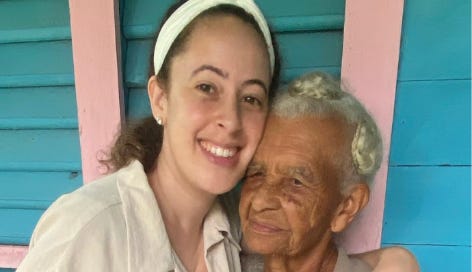





https://johnshanewayofthepoet.substack.com/p/earth-mother-for-the-midwife-john?r=4max28